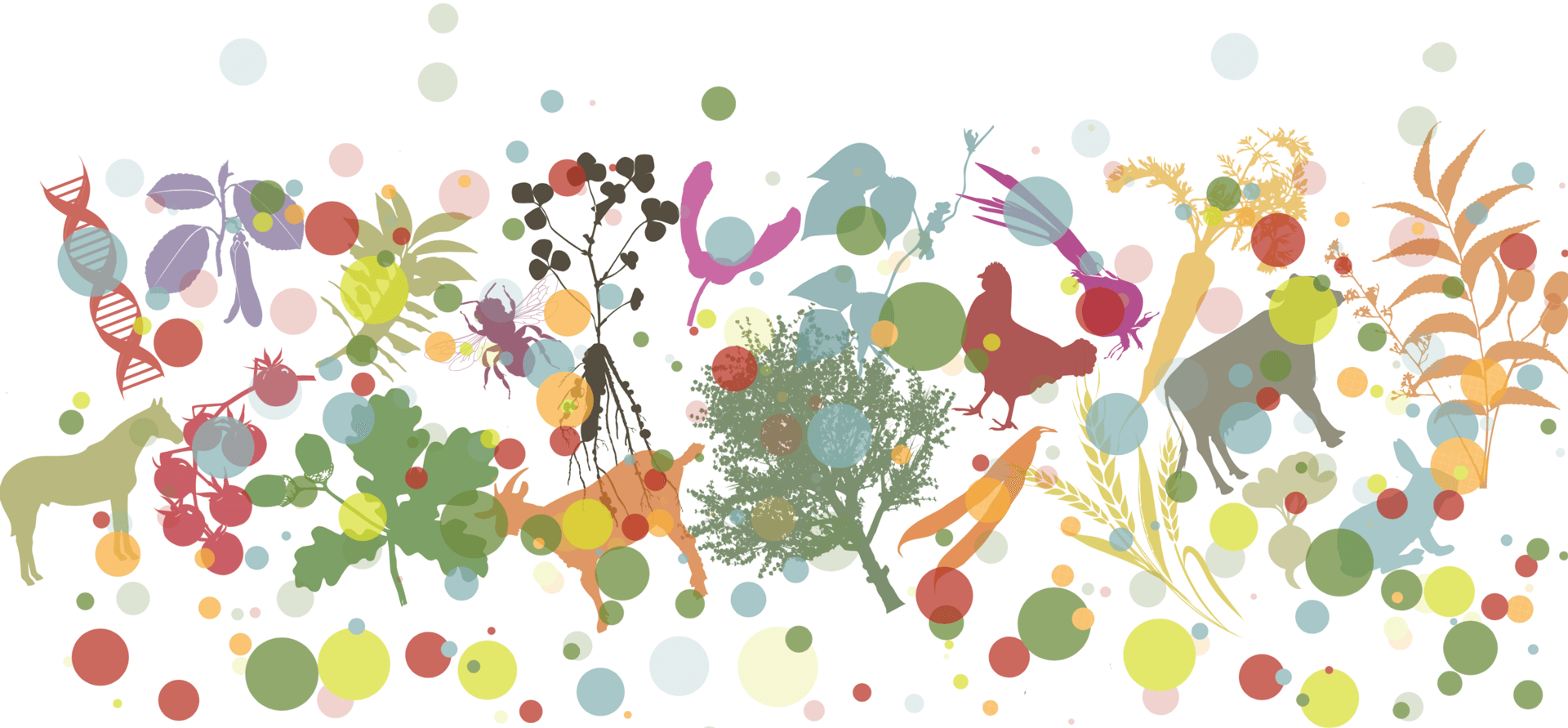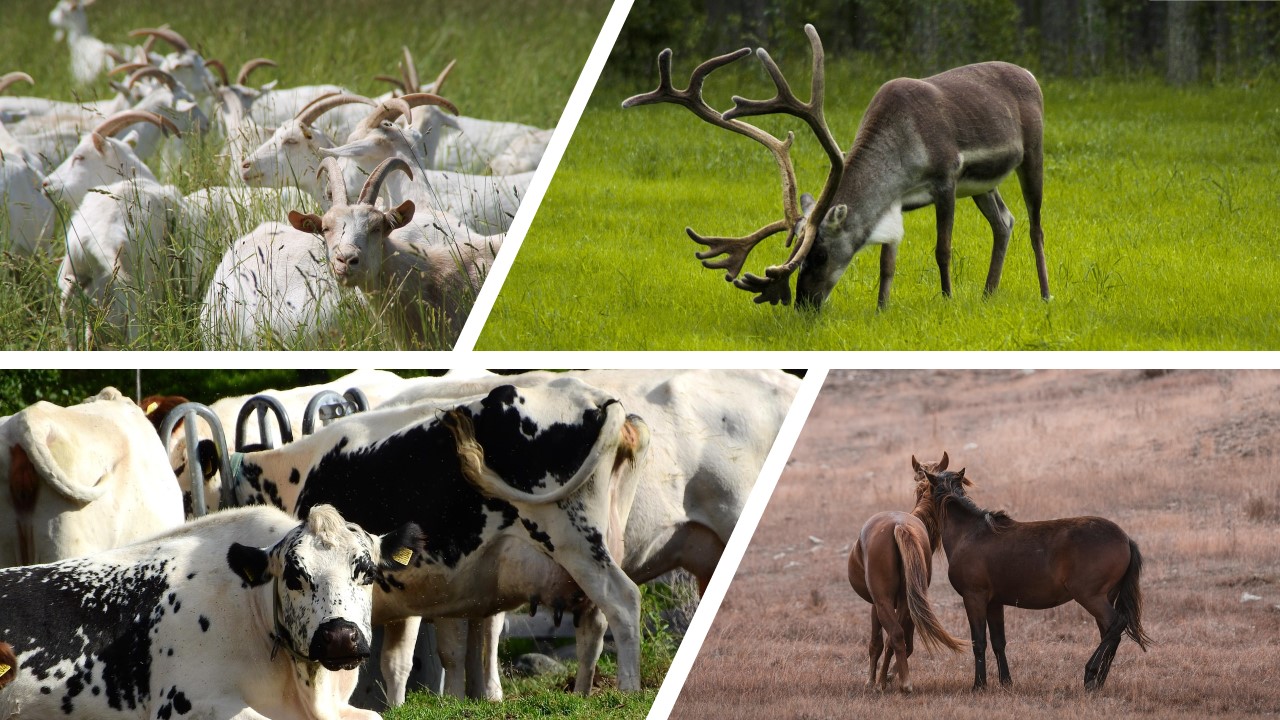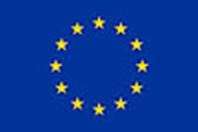Across borders – the status and future opportunities for long-term conservation of Nordic animal genetic resources
Main Article Content
Abstract
The genetic diversity of multiple animal species is now declining rapidly, highlighting the need for action to protect and preserve animal genetic resources for the long term. The Nordic countries house a broad range of farm and companion animal breeds and subspecies that play a critical role in environmental sustainability, food safety and security, and human activities. Unfortunately, close to 80% of these breeds and subspecies are either endangered or critically endangered, with population sizes too small to ensure their long-term survival. In addition, almost half of them have either a declining or unknown demographic trend, and many of them suffer from high inbreeding. Emerging pressures such as climate change, infectious diseases and public unrest further threaten the status of the populations, and urgent action is necessary to ensure their future survival. Consequently, efforts for safeguarding the genetic diversity of animal genetic resources (AnGR) with additional in vitro or cryoconservation efforts need further consideration. The Nordic conservation strategies for AnGR have traditionally been based on in vivo or live conservation. Although cryoconservation efforts are in place for some species, the number of donors and doses varies considerably between breeds and species. Due to the increasing demand for additional measures for safeguarding AnGR, this document discusses the status of active AnGR conservation measures in the Nordic countries and emphasize the central role of regional cooperation in ensuring AnGR sustainability and long-term viability. Further, the contributions of cryoconservation in mitigating genetic losses are discussed.
Article Details

This work is licensed under a Creative Commons Attribution 4.0 International License.
Authors retain copyright of the articles published in Genetic Resources and grant the journal right of first publication with open access. All articles published in Genetic Resource are licensed under Creative Commons Attribution 4.0 International License (CC BY 4.0) that allows others to download, share and adapt the work for commercial and non-commercial purposes as long as proper attribution to the original article is given. Genetic Resources permits and encourages authors to post items submitted to the journal (including the publisher's final layout) on personal websites or institutional repositories after acceptance and/or publication, while providing bibliographic details that credit their publication in Genetic Resources.
Bele, B, A Norderhaug, and H Sickel (2018). “Localized Agri-Food Systems and Biodiversity”. Agriculture 8(22). DOI: https://doi.org/10.3390/agriculture8020022. DOI: https://doi.org/10.3390/agriculture8020022
Berres, M E et al. (2020). “Heritage Finnish Landrace chickens are genetically diverse and geographically structured”. Acta Agriculturae Scandinavica, Section A - Animal Science 69(1-2), pp. 81–94. DOI: https://doi.org/10.1080/09064702.2020.1727561. DOI: https://doi.org/10.1080/09064702.2020.1727561
Bhartiya, D et al. (2014). “Making gametes from pluripotent stem cells–a promising role for very small embryonic-like stem cells”. Reprod Biol Endocrinol 12(114). DOI: https://doi.org/10.1186/1477-7827-12-114. DOI: https://doi.org/10.1186/1477-7827-12-114
Blackburn, H D, H C Azevedo, and P H Purdy (2023). “Incorporation of Biotechnologies into Gene Banking Strategies to Facilitate Rapid Reconstruction of Populations”. Animals 13(20), p. 3169. DOI: https://doi.org/10.3390/ani13203169
Bläuer, A (2015). Voita, villaa ja vetoeläimiä: Karjan varhainen historia Suomessa. Karhunhammas 17. Arkeologia/Turun yliopisto.
Bläuer, A (2024). “Karjanhoidon pitkä historia Suomessa arkeologian näkökulmasta. Suomessa arkeologian näkökulmasta”. Genos 4.
Brekke, C (2017). Genetic diversity in five chicken lines from the Norwegian live poultry gene bank. Master thesis. Department of Animal and Aquacultural Sciences. Norwegian University of Life Sciences (NMBU).
CDC (2023). Technical Report: Highly Pathogenic Avian Influenza A(H5N1) Viruses, Centers for Disease Control and Prevention. URL: https://www.cdc.gov/flu/avianflu/spotlights/2022- 2023/h5n1-technical-report_september.htm.
CDC (2024). “H5N1 Bird Flu: Current Situation Summary. Centers for Disease Control and Prevention”. URL: https://www.cdc.gov/flu/avianflu/avian-flu-summary.htm.
Clasen, J B, W F Fikse, et al. (2020). “Economic consequences of dairy crossbreeding in conventional and organic herds in Sweden”. Journal of Dairy Science 103(1), pp. 514–528. DOI: https://doi.org/10.3168/jds.2019-16958. DOI: https://doi.org/10.3168/jds.2019-16958
Clasen, J B, M Kargo, et al. (2021). “Conservation of a native dairy cattle breed through terminal crossbreeding with commercial dairy breeds”. Acta Agriculturae Scandinavica, Section A - Animal Science 70(1), pp. 1–12. DOI: https://doi.org/10.1080/09064702.2020.1867632. DOI: https://doi.org/10.1080/09064702.2020.1867632
Cowie, R H, P Bouchet, and B Fontaine (2022). “The sixth mass extinction: fact, fiction or speculation?” Biological Reviews 97, pp. 640–663. DOI: https://doi.org/10.1111/brv.12816. DOI: https://doi.org/10.1111/brv.12816
DEFRA (2021a). Native Livestock breeds: reducing extinction risk. Department for Environment, Food and Rural Affairs. URL: https://www.gov.uk/government/publications/native-livestock-breeds-reducing-extinction-risk/native-livestock-breeds-reducing-extinction-risk.
DEFRA (2021b). United Kingdom Food Security Report 2021, Department for Environment, Food and Rural Affairs.
DEFRA (2024). Updated Outbreak Assessment #11 Bluetongue Virus in Europe, Disease report. Department for Environment, Food and Rural Affairs Accessed. URL: https://assets.publishing.service.gov.uk/media/66e151e0865c0eef0bc42dfd/Updated_Outbreak_Assessment__11_Bluetongue_Virus_in_Europe.pdf.
EC (2014). Commission Delegated Regulation (EU) No 807/2014 of 11 March 2014 supplementing Regulation (EU) No 1305/2013 of the European Parliament and of the Council on support for rural development by the European Agricultural Fund for Rural Development (EAFRD) and introducing transitional provisions. URL: https://eur-lex.europa.eu/eli/reg_del/2014/807/oj.
EFSA et al. (2023). “Avian Influenza overview June – September 2023”. EFSA Journal 21(10). DOI: https://doi.org/10.2903/j.efsa.2023.8328. DOI: https://doi.org/10.2903/j.efsa.2023.8328
ERFP (2021). Animal Genetic Resources Strategy for Europe. European Regional Focal Point for Animal Genetic Resources. URL: https://www.animalgeneticresources.net/.
ERFP (2023). Guidelines On Practical Recommendations For The Development Of Genebanks Of Animal Genetic Resources. European Regional Focal Point for Animal Genetic Resources.
Eynard, S E et al. (2018). “The impact of using old germplasm on genetic merit and diversity-A cattle breed case study”. Journal of Animal Breeding and Genetics. DOI: https://doi.org/10.1111/jbg.12333. DOI: https://doi.org/10.1111/jbg.12333
FAO (2007a). Global Plan of Action for Animal Genetic Resources and the Interlaken Declaration. Rome: FAO. URL: https://openknowledge.fao.org/server/api/core/bitstreams/88062e21-b652-4c9d-bfdd-9090148430e8/content.
FAO (2007b). The First Report on the State of the World’s Animal Genetic Resources for Food and Agriculture. Rome: FAO. URL: https://openknowledge.fao.org/server/api/core/bitstreams/6cf89cba-b139-4566-be0f-ce57ace4f888/content.
FAO (2013). In vivo conservation of animal genetic resources. FAO Animal Production and Health Guidelines. No. 14. URL: https://www.fao.org/4/i3327e/i3327e.pdf.
FAO (2015). The Second Report on the State of the World’s Animal Genetic Resources for Food and Agriculture. FAO Commission on Genetic Resources for Food and Agriculture Assessments. URL: http://www.fao.org/3/a-i4787e/index.html.
FAO (2019). State of the World’s Biodiversity for Food and Agriculture. Ed. by J Belanger and D Pilling. Rome: FAO, p. 572. DOI: https://doi.org/10.4060/CA3129EN. DOI: https://doi.org/10.4060/CA3129EN
FAO (2023). Innovations in cryoconservation of animal genetic resources – Practical guide. FAO Animal Production and Health Guidelines, n33. Ed. by J Boes, P Boettcher, and M Honkatukia. Rome: FAO. DOI: https://doi.org/10.4060/cc3078en. DOI: https://doi.org/10.4060/cc3078en
FAO (2024). Domestic Animal Diversity Information System (DAD-IS). URL: https://www.fao.org/dad-is/en/.
Fraser, M D, H E Vallin, and B P Roberts (2022). “Animal board invited review: Grassland-based livestock farming and biodiversity”. Animal 16(12). DOI: https://doi.org/10.1016/j.animal.2022.100671. DOI: https://doi.org/10.1016/j.animal.2022.100671
Gorji, Z Elyasi et al. (2021). “Cryopreservation of Iranian Markhoz goat fibroblast cells as an endangered national genetic resource”. Mol Biol Rep 48(9), pp. 6241–6248. DOI: https://doi.org/10.1007/s11033-021-06534-3. DOI: https://doi.org/10.1007/s11033-021-06534-3
Graves-Herring, J E, D E Wildt, and P Comizzoli (2013). “Retention of structure and function of the cat germinal vesicle after air-drying and storage at suprazero temperature”. Biol Reprod 88(6), p. 139. DOI: https://doi.org/10.1095/biolreprod.113.108472. DOI: https://doi.org/10.1095/biolreprod.113.108472
Gray, J S et al. (2009). “Effects of Climate Change on Ticks and Tick-Borne Diseases in Europe”. Interdisciplinary Perspectives on Infectious Diseases 593232. DOI: https://doi.org/10.1155/2009/593232. DOI: https://doi.org/10.1155/2009/593232
Grundy, B, B Villanueva, and J A Woolliams (2000). “Dynamic selection for maximizing response with constrained inbreeding in schemes with overlapping generations”. Anim. Sci 70, pp. 373–382. DOI: https://doi.org/10.1017/S1357729800051717
Hall, S J G (2018). “A novel agroecosystem: Beef production in abandoned farmland as a multifunctional alternative to rewilding”. Agricultural Systems 167, pp. 10–16. DOI: https://doi.org/10.1016/j.agsy.2018.08.009. DOI: https://doi.org/10.1016/j.agsy.2018.08.009
Hauksdóttir, E (2021). Prion protein genotypes in Icelandic scrapie flocks: The effect of removing rams with a VRQ allele from Icelandic breeding stations. BMC Seminar. Thursday 14, January 2024. URL: https://lifvisindi.hi.is/prion-protein-genotypes-icelandic-scrapie-flocks-effect-removing-rams-vrq-allele-icelandic-breeding.
Horer, S et al. (2023). “Pluripotent Stem Cell-Derived In Vitro Gametogenesis and Synthetic Embryos-It Is Never Too Early for an Ethical Debate”. Stem Cells Translational Medicine 12(9), pp. 569–575. DOI: https://doi.org/10.1093/stcltm/szad042. DOI: https://doi.org/10.1093/stcltm/szad042
IUCN (2024). More than one in three tree species worldwide faces extinction - IUCN Red List. URL: https://iucn.org/press-release/202410/more-one-three-tree-species-worldwide-faces-extinction-iucn-red-list.
Jónmundsson, J V et al. (2016). Leader sheep in Iceland. URL: https://www.nordgen.org/sv/nyheter/leader-sheep-in-iceland/.
Jordbruksverket (2024). Blåtunga. URL: https://jordbruksverket.se/djur/djurskydd-smittskydd-djurhalsa-och-folkhalsa/aktuellt-lage-for-smittsamma-djursjukdomar/blatunga.
Kadri, N K et al. (2014). “A 660-Kb Deletion with Antagonistic Effects on Fertility and Milk Production Segregates at High Frequency in Nordic Red Cattle: Additional Evidence for the Common Occurrence of Balancing Selection in Livestock”. PLoS Genet 10(1), e1004049. DOI: https://doi.org/10.1371/journal.pgen.1004049. DOI: https://doi.org/10.1371/journal.pgen.1004049
Kantanen, J et al. (2015). “Utilization of farm animal genetic resources in a changing agro-ecological environment in the Nordic countries”. Frontiers in Genetics 6, p. 124970. DOI: https://doi.org/10.3389/fgene.2015.00052. DOI: https://doi.org/10.3389/fgene.2015.00052
Kierkegaard, L S et al. (2020). “The status and need for characterization of Nordic animal genetic resources”. Acta Agriculturae Scandinavica, Section A - Animal Science. DOI: https://doi.org/10.1080/09064702.2020.1722216. DOI: https://doi.org/10.1080/09064702.2020.1722216
Kroløkke, C et al. (2024). “A Flock of One’s Own: Nordic Human-Mountain Cattle Kinship-Making Practices”. Society and Animals. DOI: https://doi.org/10.1163/15685306-bja10188. DOI: https://doi.org/10.1163/15685306-bja10188
Lee, P C et al. (2019). “Influence of microwave-assisted dehydration on morphological integrity and viability of cat ovarian tissues: First steps toward long-term preservation of complex biomaterials at supra-zero temperatures”. PLoS One 14(12), e225440. DOI: https://doi.org/10.1371/journal.pone.0225440. DOI: https://doi.org/10.1371/journal.pone.0225440
Lee, P and P Comizzoli (2024). “Microwave-assisted dehydration, long-term storage at non-freezing temperatures, and rehydration of cat germinal vesicles”. Biology of Reproduction 111(2), pp. 312–321. DOI: https://doi.org/10.1093/biolre/ioae060. DOI: https://doi.org/10.1093/biolre/ioae060
Li, X C et al. (2009). “Establishment and characterization of a fibroblast cell line derived from Jining Black Grey goat for genetic conservation”. Small Ruminant Research 87(1-3), pp. 17–26. DOI: https://doi.org/10.1016/j.smallrumres.2009.09.028. DOI: https://doi.org/10.1016/j.smallrumres.2009.09.028
Mahabadi, J A et al. (2018). “Derivation of male germ cells from induced pluripotent stem cells by inducers: A review”. Cytotherapy 20(3), pp. 279–290. DOI: https://doi.org/10.1016/j.jcyt.2018.01.002. DOI: https://doi.org/10.1016/j.jcyt.2018.01.002
Maijala, K (2011). “Early animal genetic resources conservation in Scandinavia-first decades of identification and conservation of animal genetic resources in Scandinavia”. Animal Genetic Resources/Resources génétiques animales/Recursos genéticos animales 49, pp. 87–95. DOI: https://doi.org/10.1017/S2078633611000051
Moradi, S et al. (2019). “Research and therapy with induced pluripotent stem cells (iPSCs): social, legal, and ethical considerations”. Stem Cell Res Ther 10(1), pp. 341–341. DOI: https://doi.org/10.1186/s13287-019-1455-y. DOI: https://doi.org/10.1186/s13287-019-1455-y
NDCC (2024). Bluetongue Virus Update 20th June 2024. National Disease Control Centre. URL: https://www.animalhealthsurveillance.agriculture.gov.ie/media/animalhealthsurveillance/Bluetongue%20update%20no5%20of%202024.%20pdf.pdf.
Ovaska, U et al. (2021). “The Conservation of Native Domestic Animal Breeds in Nordic Countries: From Genetic Resources to Cultural Heritage and Good Governance”. Animals (Basel) 11(9), p. 2730. DOI: https://doi.org/10.3390/ani11092730. DOI: https://doi.org/10.3390/ani11092730
Pehu, T et al. (2018). Suomen maa-, metsä- ja kalatalouden kansallinen geenivaraohjelma. Finland’s National Genetic Resources Programme for Agriculture, Forestry and Fishery. URL: http://urn.fi/URN:ISBN:978-952-366-182-0.
Ramos, M et al. (2021). “Terrestial Slugs in Neotropical Agroecosystems”. Frontiers in Sustainable Food Systems 5. DOI: https://doi.org/10.3389/fsufs.2021.656492. DOI: https://doi.org/10.3389/fsufs.2021.656492
Sæther, N et al. (2018). Strategiplan for Genbank for verpehøns 2018-2027. URL: https://nibio.brage.unit.no/nibio-xmlui/bitstream/handle/11250/2488879/NIBIO_RAPPORT_2018_4_28.pdf?sequence=1&isAllowed=y.
Silversides, F G, P H Purdy, and H D Blackburn (2012). “Comparative costs of programmes to conserve chicken genetic variation based on maintaining living populations or storing cryopreserved material”. British Poultry Science 53(5), pp. 599–607. DOI: https://doi.org/10.1080/00071668.2012.727383
Simmons, A J (2022). “Trends in the tropospheric general circulation from 1979 to 2022”. Weather Clim. Dynam 3, pp. 777–809. DOI: https://doi.org/10.5194/wcd-3-777-2022. DOI: https://doi.org/10.5194/wcd-3-777-2022
Sommer, R M and R H Cowie (2020). “Invasive traits of veronicellid slugs in the Hawaiian Islands and temperature response suggesting possible range shifts under a changing climate”. Journal of Molluscan Studies 86(2), pp. 147–155. DOI: https://doi.org/10.1093/mollus/eyz042. DOI: https://doi.org/10.1093/mollus/eyz042
SVA (2024a). Blåtunga. URL: https://www.sva.se/amnesomraden/djursjukdomar-a-o/blatunga/.
SVA (2024b). Lägesbild Salmonella Enteriditis 2024 -07-25, Statens veterinärmedicinska anstalt. URL: https://www.sva.se/media/1dmhvulw/240725-l%C3%83%C2%A4gesbild-salmonella-enteritidis.pdf.
Thorgeirsdottir, S (2022). “Scrapie situation and recent findings from Iceland”. In: 19th Annual Meeting of the EURL for TSE, Torino, Italy, October 2022. url: https://www.izsplv.it/components/com_publiccompetitions/includes/download.php?id=2564:day1_6_nrl_iceland_thorgeirsdottir-scrapie-situation-and-recent-findings-from-iceland.pdf.
UN (1992). Convention on Biological Diversity. URL: https://www.cbd.int/convention/text/default.shtml.
Van Der Sluis, M and M A Schoon (2024). “Kerncollecties van Nederlandse landbouwhuisdierrassen in de genenbank; huidige stand van zaken en prioriteiten voor aanvulling van de dierlijke genenbankcollecties”. In: Centre for Genetic Resources, the Netherlands (CGN), Wageningen University & Research. DOI: https://doi.org/10.18174/655148
Veterinærinstituttet (2024). Status blåtunge i Norge. URL: https://www.vetinst.no/dyr/sau/status-blatunge-i-norge.
Wang, J, N H Ogden, and H Zhu (2011). “The impact of weather conditions on Culex pipiens and Culex restuans (Diptera: Culicidae) abundance: a case study in Peel Region”. Journal of Medical Entomology 48(2), pp. 468–475. DOI: https://doi.org/10.1603/me10117. DOI: https://doi.org/10.1603/ME10117
White, E L F, M Honkatukia, and J Peippo (2024). “NordFrost Project Report - Farm Animal Gene Banks in the Nordic Region: Added Value Through Nordic Cooperation”. NordGen Publication Series 6. DOI: https://doi.org/10.53780/LFNW7075. DOI: https://doi.org/10.53780/LFNW7075
White, E L F, M Honkatukia, J Peippo, and M Kjetså (2024). “Equines in the Nordics: History, Status and Genetics”. NordGen Publication Series 5, pp. 978–91.
White, E L F, M Kjetså, et al. (2024). Nordic 40 years of Nordic collaboration in the conservation of Animal Genetic Resources - A status report on the conservation of farm animal genetic resources (AnGR) in the Nordics.
Wooliams, J et al. (2005). Sustainable Management of Animal Genetic resources. Nordic Gene Bank Farm Animals.
Woolliams, J A et al. (2015). “Genetic contributions and their optimization”. Journal of Animal Breeding and Genetics 132(2), pp. 89–99. DOI: https://doi.org/10.1111/jbg.12148
WWF (2022). Living Planet Report 2022 - Building a nature-positive society. Ed. by R E A Almonds et al. Gland, Switzerland: WWF.
Yoo, E - H et al. (2016). “The Effects of Weather and Environmental Factors on West Nile Virus Mosquito Abundance in Greater Toronto Area”. AMS Journals. DOI: https://doi.org/10.1175/EI-D-15-0003.1. DOI: https://doi.org/10.1175/EI-D-15-0003.1







 This journal has been conceived as part of the
This journal has been conceived as part of the